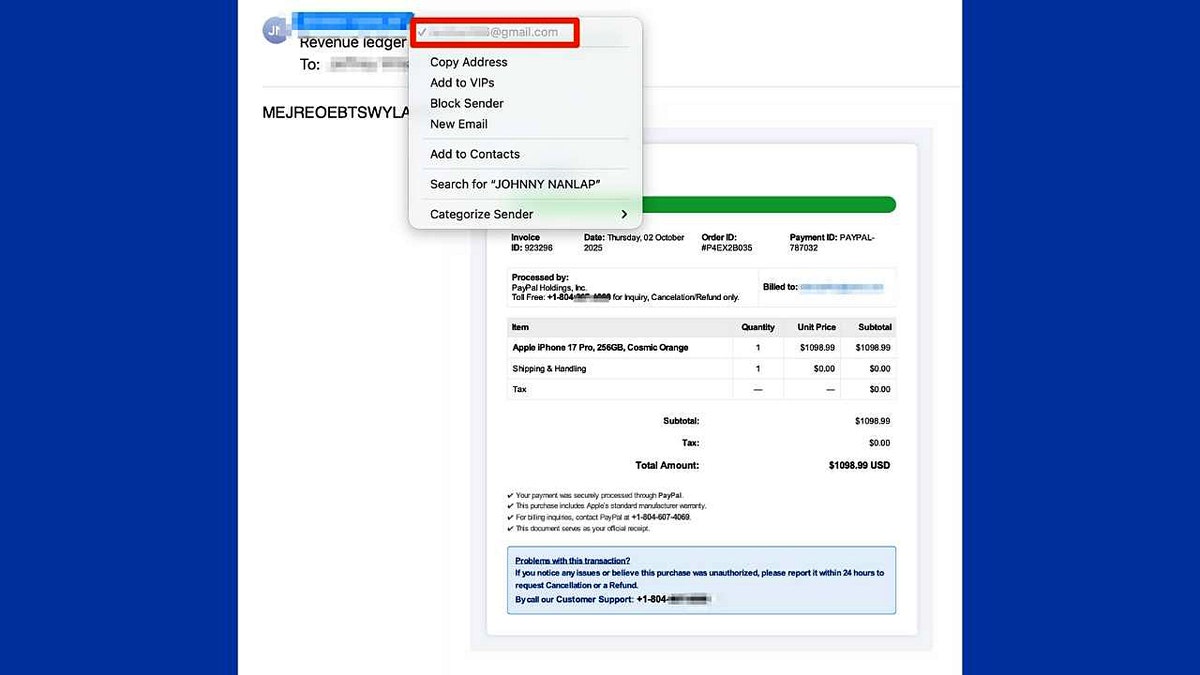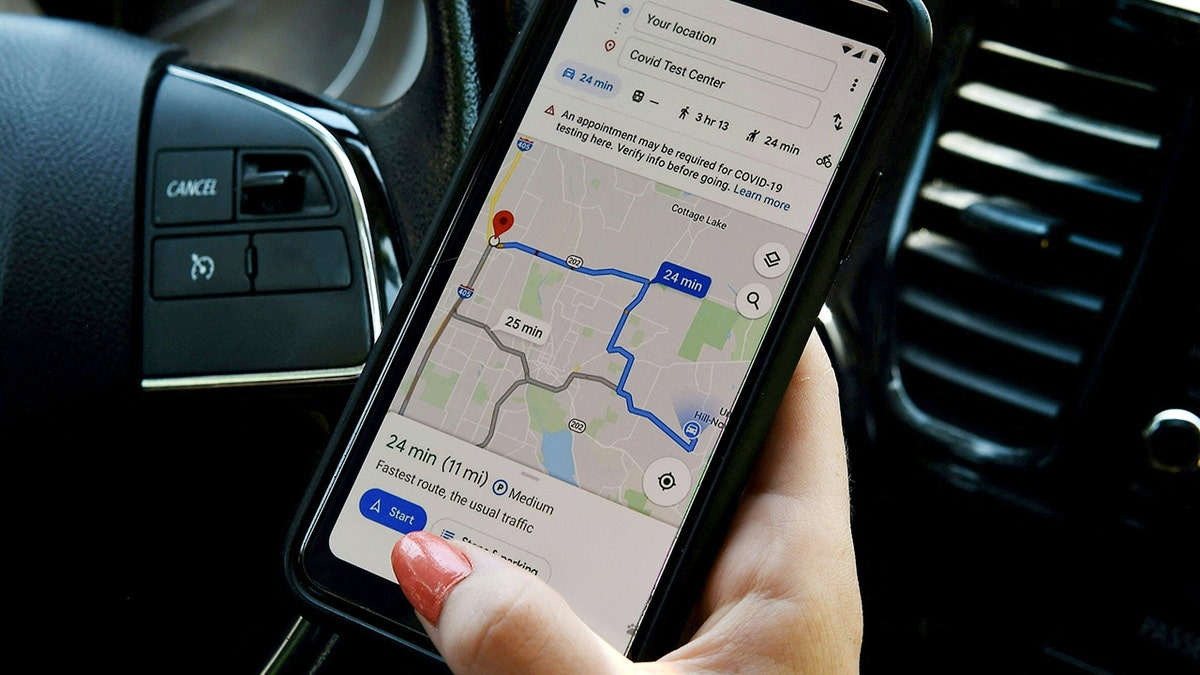NEWYou can now listen to Fox News articles!
Navigation apps have become an essential part of modern life. Whether you are commuting to work, running errands or exploring a new city, relying on accurate directions and real-time traffic updates can make all the difference. Over the past decade, Google Maps, Waze and Apple Maps have emerged as the dominant players in this space, each offering a distinct approach to navigation.
While millions of people rely on these apps daily, choosing the right one can depend on a variety of factors, from interface design to privacy policies. In this article, we compare these three apps across usability, accuracy, features and data handling to help you determine which one best fits your needs.
Sign up for my FREE CyberGuy Report
Get my best tech tips, urgent security alerts and exclusive deals delivered straight to your inbox. Plus, you’ll get instant access to my Ultimate Scam Survival Guide – free when you join my CyberGuy.com newsletter.
What each app does best
Google Maps is widely regarded as the all-rounder. It combines extensive mapping data with points of interest, public transit information, Street View, Live View AR and detailed business listings. Its versatility makes it a top choice for both daily commuters and travelers.
Google Maps is a great way to explore the world with detailed routes, Street View, and real-time traffic insights. (OLIVIER DOULIERY/AFP via Getty Images)
Waze, on the other hand, is designed primarily for drivers. It thrives on community input, offering live updates about traffic jams, road hazards, accidents and even police presence. Since Google owns Waze, many Waze-style real-time alerts have now begun appearing directly inside Google Maps. While Waze still focuses on driving, this integration blurs the lines between the two apps.
Apple Maps has made major strides in recent years. Once considered the underdog, it’s now a solid choice for iOS users. Its clean interface, privacy-focused design and seamless integration with Siri, CarPlay and Apple Watch make it a convenient pick for those fully in the Apple ecosystem.
INSTAGRAM FRIEND MAP FEATURE SPARKS PRIVACY QUESTIONS
Usability and interface
When it comes to interface, each app approaches design differently.
Google Maps provides a dense but intuitive layout, giving users access to multiple layers of information, including traffic, satellite imagery and public transit routes. Switching between driving, walking, biking and transit is straightforward, and the search functionality is robust, often displaying detailed business profiles, ratings, and hours of operation.
Waze prioritizes active driving support. Its interface is visually bold, with clear alerts for traffic jams, accidents and road hazards submitted by other users. While some may find the screen slightly cluttered, the focus is entirely on driving efficiency, which makes sense given its target audience.
Waze helps to put you on a faster route with live, community-driven alerts that help you dodge traffic jams and road hazards. (Kurt “CyberGuy” Knutsson)
Apple Maps offers a minimalist, streamlined interface that emphasizes simplicity. Searching for locations, initiating navigation, and following turn-by-turn instructions is straightforward. The app works seamlessly with iOS features like Siri and CarPlay, providing a smooth and cohesive experience for Apple users.
Navigation accuracy and performance
Accurate routing and timely traffic updates are critical.
Google Maps remains the most reliable for precise routing and travel time estimates. It combines AI-enhanced predictive routing with historical and live traffic data to suggest the best route. Its consistency holds strong across urban and rural areas alike.
Waze is unmatched for real-time rerouting. Relying heavily on crowd-sourced reports, it often detects slowdowns or hazards before Google Maps does. However, it still struggles when offline or in areas with poor data coverage.
Apple Maps has significantly improved its routing accuracy, especially in cities. Its traffic data is now crowd-sourced from millions of iPhones, processed on-device to protect privacy. In some rural or international regions, though, it can still lag behind Google Maps and Waze.
Apple Maps offers seamless use with your iPhone and CarPlay for smooth and privacy-focused navigation. (Kurt “CyberGuy” Knutsson)
Features and ecosystem integration
Beyond basic navigation, each app offers additional tools and integrations.
Google Maps offers offline maps, Live View AR navigation, multi-stop routing, EV charger locations and indoor maps for airports and malls. Integration with Gmail, Calendar and Google Assistant creates a seamless travel experience.
Waze remains focused on social and driving-specific features. You can report hazards or police sightings and even control Spotify, Audible or podcasts directly from the app without switching screens.
Apple Maps leans into privacy and ecosystem benefits. Its “Look Around” feature rivals Street View, while EV routing, cycling paths and Siri integration make it ideal for Apple fans. Apple also uses anonymized “Look Around” imagery to train its AI models, but with strict privacy safeguards like blurring faces and plates.
YOUR PHONE IS TRACKING YOU EVEN WHEN YOU THINK IT’S NOT
Privacy and data handling
How these apps handle your personal data matters more than ever.
Google Maps collects detailed location and usage data to power personalization and advertising. That means better recommendations, but less privacy for users who prefer anonymity.
Waze, also owned by Google, gathers anonymized driving data to enhance community reporting. Its functionality depends on sharing your location in real time, which is necessary for crowd-sourced accuracy.
Apple Maps takes a different approach. It processes most data on-device, uses random identifiers instead of personal accounts and does not associate searches with your Apple ID. That makes it the most privacy-conscious option, though even Apple collects anonymized data for traffic and route improvements.
Take my quiz: How safe is your online security?
Think your devices and data are truly protected? Take this quick quiz to see where your digital habits stand. From passwords to Wi-Fi settings, you’ll get a personalized breakdown of what you’re doing right and what needs improvement. Take my Quiz here: CyberGuy.com.
Kurt’s key takeaway
There is no single “best” navigation app, and the right choice depends on your priorities. Google Maps is ideal if you want a feature-packed, versatile app that works well for a variety of transportation modes and travel scenarios. Its global coverage and rich data make it reliable for everyday use and exploration. Waze is best if your main concern is real-time driving efficiency. Its community-driven traffic alerts and dynamic rerouting help you avoid congestion and save time during daily commutes. Apple Maps suits users deeply embedded in the Apple ecosystem who value simplicity, clean design and privacy protections. It may not have as many features as Google Maps or the same real-time edge as Waze, but its seamless integration with iOS makes it convenient.
Which navigation app do you rely on most for daily commuting, and why? Let us know by writing to us at CyberGuy.com.
Sign up for my FREE CyberGuy Report
Get my best tech tips, urgent security alerts and exclusive deals delivered straight to your inbox. Plus, you’ll get instant access to my Ultimate Scam Survival Guide – free when you join my CyberGuy.com newsletter.
CLICK HERE TO GET THE FOX NEWS APP
Copyright 2025 CyberGuy.com. All rights reserved.
Kurt “CyberGuy” Knutsson is an award-winning tech journalist who has a deep love of technology, gear and gadgets that make life better with his contributions for Fox News & FOX Business beginning mornings on “FOX & Friends.” Got a tech question? Get Kurt’s free CyberGuy Newsletter, share your voice, a story idea or comment at CyberGuy.com.


























